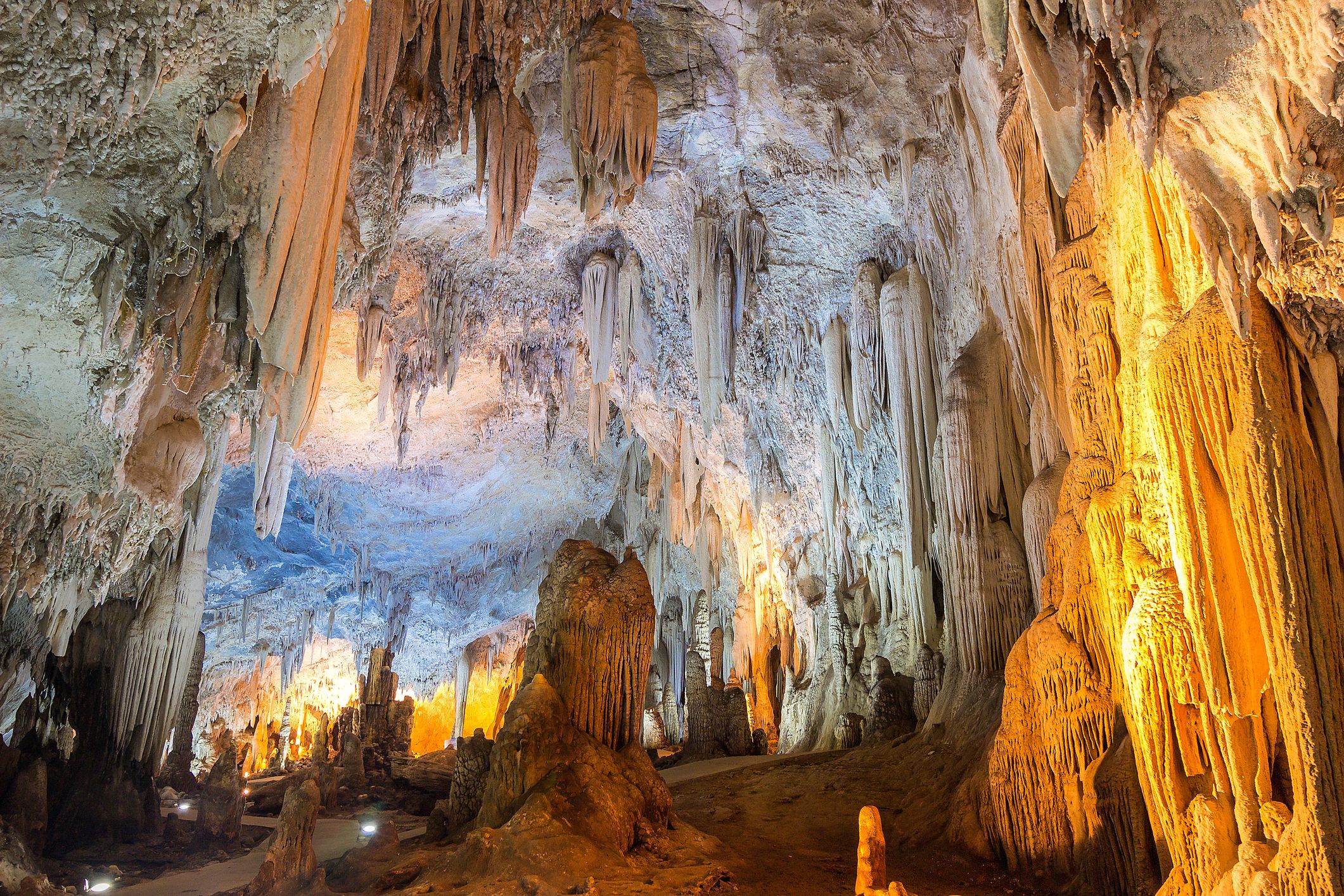
We are living in a new geological age, scientists with the International Commission on Stratigraphy (ICS) have announced. Chemical signatures discovered in rocks rising from the floors of Indian caves mark the "Meghalayan Age," which began 4,200 years ago.
The new age began with a 200-year mega-drought that ruptured civilizations and led to migrations across the world, the ICS reported.
This powerful climatic event left its mark on rocks as well as cultures. Geologists have found evidence for the new age in sediments on all seven continents of the planet. This combination of age-defining climatic and cultural events is exciting, Stanley Finney, secretary general of the International Union of Geological Sciences (IUGS), told Newsweek.
Geologists with the IUGS voted on the new classification last month, Long Beach State University stated. It stretches from 4,200 years ago to the present on the famous International Chronostratigraphic Chart. The rainbow blocks of the chart that carve out the eons, eras, periods, epochs and ages of our Earth are a familiar site in classrooms and university halls around the world.
Now, the pale yellow block of latest epoch—the Holocene—has three new boxes. As well as the Meghalayan Age, it's divided into the Northgrippian and Greenlandian Ages. Marked by ice cores from Greenland, the Northgrippian Age stretches from about 8,300 years ago to the start of the Meghalayan Age. The Greenlandian Age began 11,700 years ago and ended with the dawn of the Northgrippian Age.
The latest version of the International Chronostratigraphic Chart/Geologic Time Scale is now available! New #Holocene subdivisions: #Greenlandian (11,700 yr b2k)#Northgrippian (8326 yr b2k)#Meghalayan (4200 yr before 1950) https://t.co/IhvZHfHnWh#ChronostratigraphicChart208 pic.twitter.com/8Pf9Dnct7h
— IUGS (@theIUGS) July 13, 2018
These three segments are the first formal divisions within the Holocene Epoch, ICS secretary general Philip Gibbard reported, and it's taken more than a decade of work to define them.
"The units represent a highly refined record of the evolution of surface environments of the Earth System, which, in turn, provide a basis for evaluation of the nature of the climate change occurring today," Finney said.
The Meghalayan Age is named after the northeastern Indian state of Meghalaya, which is home to the caves where the stalagmite was found. "In these stalagmites there is a very highly detailed record of climate change, which is shown by the geochemistry of the precipitated material—the carbonate formed by the dripping of water in the cave," Gibbard told Newsweek. "This indicates a major change in the global climate, especially in the mid and low latitudes, at around about 4,200 years ago."
The stalagmite from India with the GSSP for the base of the Meghalayan Stage (beginning of Meghalayan Age).https://t.co/ginCzDbKYS#Holocene #Meghalayan #GSSP pic.twitter.com/VV82P9AYVR
— IUGS (@theIUGS) July 14, 2018
But not all academics are happy with the changes. Some argue the new divisions don't account for the Anthropocene—the period of time concerned with the influence of humans on the planet. Much work remains to more precisely understand this period and, for some, the Meghalayan classification is premature.
"After the original paper and going through various committees, they've suddenly announced [the Meghalayan] and stuck it on the diagram. It's official, we're in a new age; who knew?" Mark Maslin, a professor of geography at University College London, told the BBC.
"We have lots of new definitions that perhaps now contradict the Anthropocene Working Group and go against what most scientists perceive to be the most important change on Earth in the last 10,000 years."
But Gibbard told Newsweek the Anthropocene controversy is misjudged. "This was not intended in any sense to be a substitute for Anthropocene," he said. Attempts to define the age of human influence in the same way as geologists defined the Meghalayan are problematic, he explained.
"Human impacts on the landscape... and on the environment didn't start at the same time everywhere on Earth. If you live in China these things began 5,000 or more years ago. If you live in North America, they seem to have begun roughly in the 1700s," Gibbard said. "To draw a single line—which is what geologists have to do—that is the same age everywhere on the Earth's surface, we have to have [a global] event. Either a change in the biology... or some change in the physical environment such as the geochemistry."
"The Anthropocene issue must be seen as a separate one. Whether or not that can actually be defined in any meaningful way is a completely separate issue."
This article has been updated to include comment from Philip Gibbard and Stanley Finney. It has also been corrected to accurately reflect the name of Long Beach State University.
Uncommon Knowledge
Newsweek is committed to challenging conventional wisdom and finding connections in the search for common ground.
Newsweek is committed to challenging conventional wisdom and finding connections in the search for common ground.
About the writer
Katherine Hignett is a reporter based in London. She currently covers current affairs, health and science. Prior to joining Newsweek ... Read more
To read how Newsweek uses AI as a newsroom tool, Click here.








